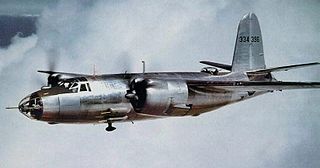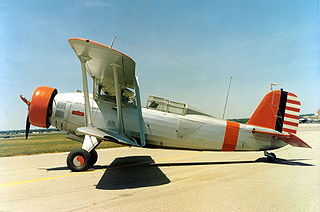The V Bomber Command is an inactive United States Army Air Forces unit. It was last assigned to Fifth Air Force, based at Irumagawa AB, Japan. It was inactivated on 31 May 1946.

The 67th Cyberspace Operations Group is a unit of the 67th Cyberspace Wing. Headquartered on Kelly Field Annex's Security Hill, the group is an Air Force information operations unit.

The 75th Air Base Wing is a wing of the United States Air Force based out of Hill Air Force Base, Ogden Utah. It provides base operating support for the Ogden Air Logistics Complex, the 388th, 419th Fighter Wing, 84th Combat Sustainment Wing, 309th Maintenance Wing, 526th ICBM Systems Wing, 508th Aircraft Sustainment Wing and 25 associate units.

The 76th Tactical Reconnaissance Group is a disbanded United States Army Air Forces organization. It was last active in 1944 as part of the Desert Training Center at Thermal Army Air Field, California.

The 69th Reconnaissance Group is an inactive United States Air Force that was part of Air Combat Command, the group was stationed at Grand Forks Air Force Base, North Dakota where it was a tenant of the 319th Air Base Wing.

The V Fighter Command is a disbanded United States Air Force headquarters. It was established as the 2nd Interceptor Command in June 1941, with responsibility for air defense of the northwest United States and training fighter units in its area of responsibility. Shortly after the attack on Pearl Harbor, the Army formed Western Defense Command, with responsibility for the entire Pacific coast. All air defense functions were transferred to 4th Interceptor Command, and the command was slated for transfer to the Southwest Pacific Theater as 5th Fighter Command.

The IX Fighter Command was a United States Army Air Forces formation. Its last assignment was with the Ninth Air Force, based at Erlangen, Germany, wheret was inactivated on 16 November 1945.

The XIX Tactical Air Command is an inactive United States Air Force unit. The unit's last assignment was with the Ninth Air Force based at Biggs Field, Texas, where it was inactivated on 31 March 1946.

The III Bomber Command is a disbanded United States Air Force headquarters. It was established in September 1941, shortly before the attack on Pearl Harbor to command bomber units assigned to 3rd Air Force. Following the entry of the United States into World War II, it flew patrols off the south Atlantic and Gulf coasts. However, its main efforts soon began organizing and training medium bomber units and aircrews. Its last assignment was with Third Air Force at MacDill Field, Florida. It was inactivated on 8 April 1946 and disbanded in October 1948.

The III Fighter Command is an inactive United States Air Force unit. Its last assignment was at MacDill Field, Florida. It was inactivated on 8 April 1946.

The III Reconnaissance Command was a United States Army Air Forces unit. Its last assignment was with Third Air Force stationed at Rapid City Army Air Base, South Dakota, where it was inactivated on 8 April 1946.

The III Tactical Air Command was a United States Army Air Forces formation. Its last assignment was with Third Air Force stationed at Barksdale Field, Louisiana. It was disbanded on 24 October 1945. The command was established in 1941 as the 3rd Air Support Command. It was responsible for training tactical units and aircrews for the Army Air Forces, except for the period from August 1943 through March 1944, when it specialied in training reconnaissance units.
The 74th Reconnaissance Group is an inactive United States Air Force unit. It was last assigned to the 91st Air Division at Stewart AFB, New York.

The 30th Tactical Reconnaissance Squadron is a disbanded United States Air Force unit. It was first activated in November 1940 as the 30th Army Reconnaissance Squadron, and from 1941 to 1943 was designated the 30th Observation Squadron. It participated in maneuvers and helped train ground units through 1942, when it became a Replacement Training Unit. It was disbanded on 1 May 1944 at Key Field, Mississippi.

The I Tactical Air Division is an inactive United States Air Force unit. It was last assigned to Second Air Force, based at Biggs Field, Texas. It was inactivated on 22 December 1945.

The XII Tactical Air Command was a formation of the United States Army Air Forces. Its last assignment was with the United States Air Forces in Europe at Bad Kissingen, Germany, where it was inactivated on 10 November 1947.

The VIII Air Support Command is a disbanded United States Army Air Forces unit. It was assigned to Eighth Air Force throughout its existence, and it was last stationed at Sunninghill Park, England, where it was disbanded on 1 December 1943.

The 36th Intelligence Squadron is an active non-flying squadron, of the United States Air Force. It is assigned to the Air Force Targeting Center at Langley Air Force Base, Virginia, where it has been stationed since 1990. The squadron has earned the Air Force Meritorious Unit Award, the Air Force Outstanding Unit Award, and the Air Force Organizational Excellence Award while stationed at Langley.

The 14th Weapons Squadron is a United States Air Force unit. It is assigned to the USAF Weapons School, stationed at Hurlburt Field, Florida.

The 24th Intelligence Squadron is an active United States Air Force unit stationed at Ramstein Air Base, Germany. The squadron was first activated as the 24th Observation Squadron during World War II. it conducted aerial reconnaissance training, until converting to the photographic mission as the 33d Photographic Reconnaissance Squadron. it deployed to the European Theater of Operations, where it conducted combat reconnaissance missions, earning a Distinguished Unit Citation and being cited in the Belgian Army Order of the Day on two occasions. It remained in Europe following V-E Day, becoming non operational in August 1945. Its ground echelon returned to the United States in the fall of 1945 and it was inactivated at the port of embarkation.


















